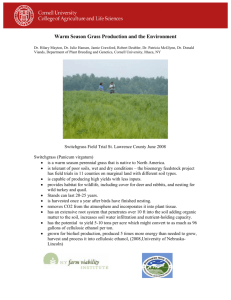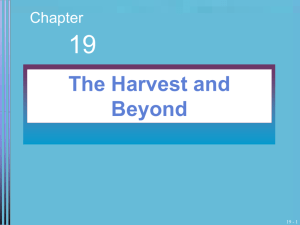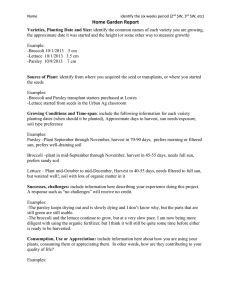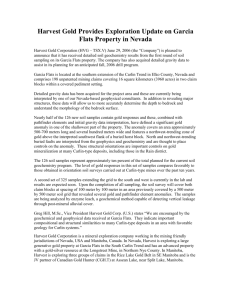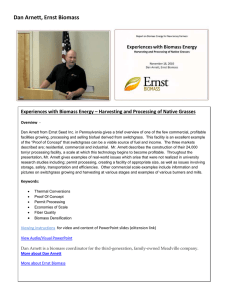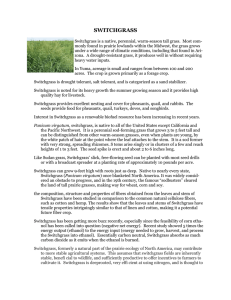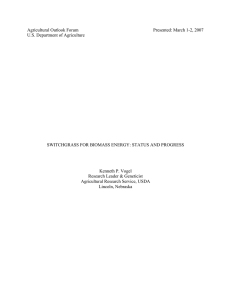Northeast Region Dr. Stephen Herbert, University of Massachusetts WWW.NESUNGRANT.CORNELL.EDU
advertisement
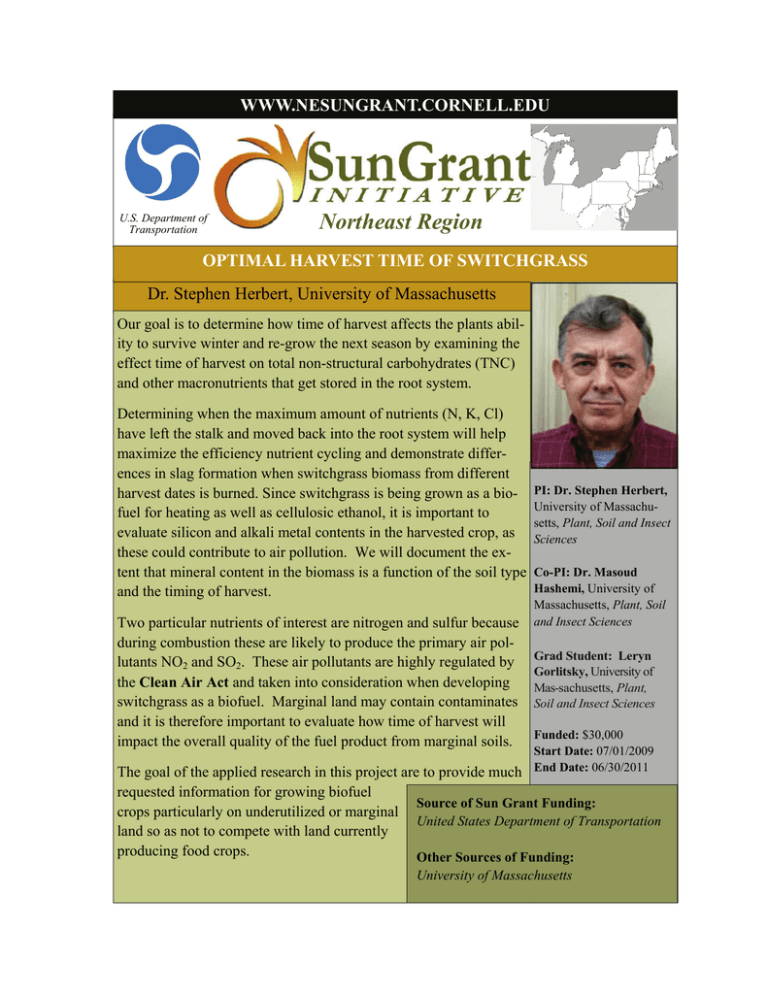
WWW.NESUNGRANT.CORNELL.EDU U.S. Department of Transportation Northeast Region OPTIMAL HARVEST TIME OF SWITCHGRASS Dr. Stephen Herbert, University of Massachusetts Our goal is to determine how time of harvest affects the plants ability to survive winter and re-grow the next season by examining the effect time of harvest on total non-structural carbohydrates (TNC) and other macronutrients that get stored in the root system. Determining when the maximum amount of nutrients (N, K, Cl) have left the stalk and moved back into the root system will help maximize the efficiency nutrient cycling and demonstrate differences in slag formation when switchgrass biomass from different harvest dates is burned. Since switchgrass is being grown as a biofuel for heating as well as cellulosic ethanol, it is important to evaluate silicon and alkali metal contents in the harvested crop, as these could contribute to air pollution. We will document the extent that mineral content in the biomass is a function of the soil type and the timing of harvest. Two particular nutrients of interest are nitrogen and sulfur because during combustion these are likely to produce the primary air pollutants NO2 and SO2. These air pollutants are highly regulated by the Clean Air Act and taken into consideration when developing switchgrass as a biofuel. Marginal land may contain contaminates and it is therefore important to evaluate how time of harvest will impact the overall quality of the fuel product from marginal soils. PI: Dr. Stephen Herbert, University of Massachusetts, Plant, Soil and Insect Sciences Co-PI: Dr. Masoud Hashemi, University of Massachusetts, Plant, Soil and Insect Sciences Grad Student: Leryn Gorlitsky, University of Mas-sachusetts, Plant, Soil and Insect Sciences Funded: $30,000 Start Date: 07/01/2009 The goal of the applied research in this project are to provide much End Date: 06/30/2011 requested information for growing biofuel crops particularly on underutilized or marginal land so as not to compete with land currently producing food crops. Source of Sun Grant Funding: United States Department of Transportation Other Sources of Funding: University of Massachusetts
